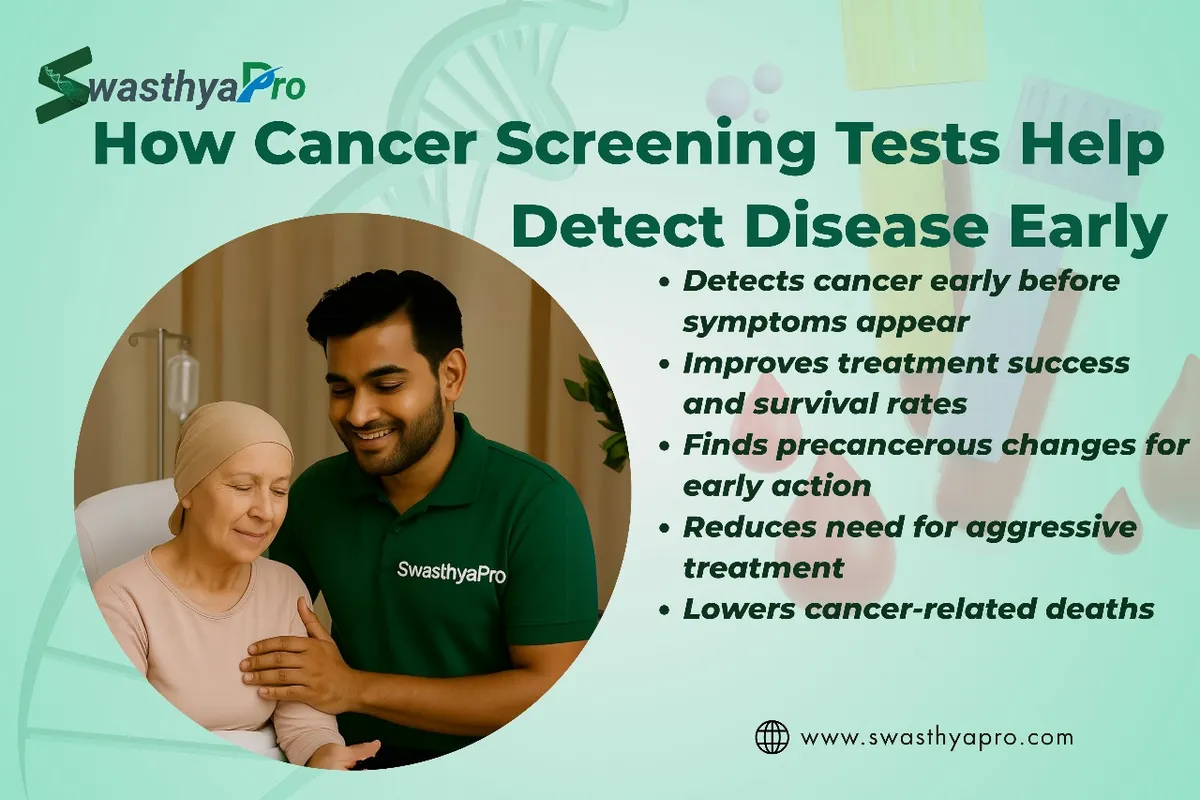Cancer screening test for women: breast, cervical, and ovarian cancers explained

Women’s health needs are unique — especially when it comes to cancer. Many types of cancer that affect women start silently and progress without early warning signs. That’s why regular cancer screening test appointments are so important. They can help catch the disease in its earliest stage, long before symptoms appear.
In this article, we’ll break down the three most critical cancer screening test types for women: breast, cervical, and ovarian cancer. You’ll learn when to get screened, what to expect, and how early detection could save your life.
1. Breast Cancer: Mammogram as the primary cancer screening test
Breast cancer is one of the most common cancers in women, but it’s also highly treatable when caught early. A cancer screening test for breast cancer usually comes in the form of a mammogram.
What is a mammogram?
It’s a low-dose X-ray that examines breast tissue and helps detect lumps or changes that may not be felt during a self-exam.
When should you get it?
Women over the age of 40 are generally advised to get a mammogram every 1–2 years. If you have a family history of breast cancer, your doctor may recommend starting earlier.
Getting a regular cancer screening test like a mammogram helps find tumors before they grow or spread.
2. Cervical Cancer: Pap smear and HPV test
Cervical cancer develops slowly and can often be completely prevented through early testing. That’s why a Pap smear and HPV test are two vital cancer screening test options for women.
What is a Pap smear?
A Pap smear checks for abnormal cells on the cervix that could become cancerous if untreated.
What is the HPV test?
It looks for the human papillomavirus, which is the leading cause of cervical cancer.
When should you get tested?
Starting at age 21, women should get a Pap smear every 3 years. From age 30 onward, many women switch to co-testing (Pap + HPV) every 5 years.
A cancer screening test like this is simple, takes just a few minutes, and can detect changes years before cancer develops.
3. Ovarian Cancer: The silent one
Ovarian cancer is harder to detect early because it often doesn’t cause noticeable symptoms. Unfortunately, there is no single reliable cancer screening test for ovarian cancer that is widely recommended for all women. However, in high-risk cases (like BRCA gene carriers or strong family history), doctors may recommend specific monitoring.
What can be done?
- Pelvic exams: Help spot changes in the ovaries
- Transvaginal ultrasound (TVUS): Looks at ovaries and uterus
- CA-125 blood test: Measures a protein that may be high in women with ovarian cancer
Though not standard, these tools can act as a cancer screening test in specific scenarios.
Signs to never ignore
While a cancer screening test is best done on schedule, certain symptoms in women should prompt earlier testing:
- Unusual vaginal bleeding or discharge
- Pelvic pain or bloating
- Breast lumps or nipple discharge
- Sudden weight loss or fatigue
If you notice any of these, don’t wait — talk to a doctor and ask about a cancer screening test immediately.
Breaking the fear and stigma
Many women avoid cancer screening tests out of fear, embarrassment, or just busy schedules. But avoiding these tests doesn’t avoid the disease — it only delays detection.
Screening is about taking control, not about waiting for problems. Most of the time, tests come back normal. And if they don’t, you’ve caught something early — when treatment is simpler and success rates are higher.
Final thoughts
A cancer screening test for women isn’t something to postpone. Whether it’s a mammogram, a Pap smear, or even a consultation for ovarian health, these steps give you power over your body and future.
Make your health non-negotiable. Talk to your doctor. Know your risk. And schedule your next cancer screening test — not when you feel something, but before anything starts.